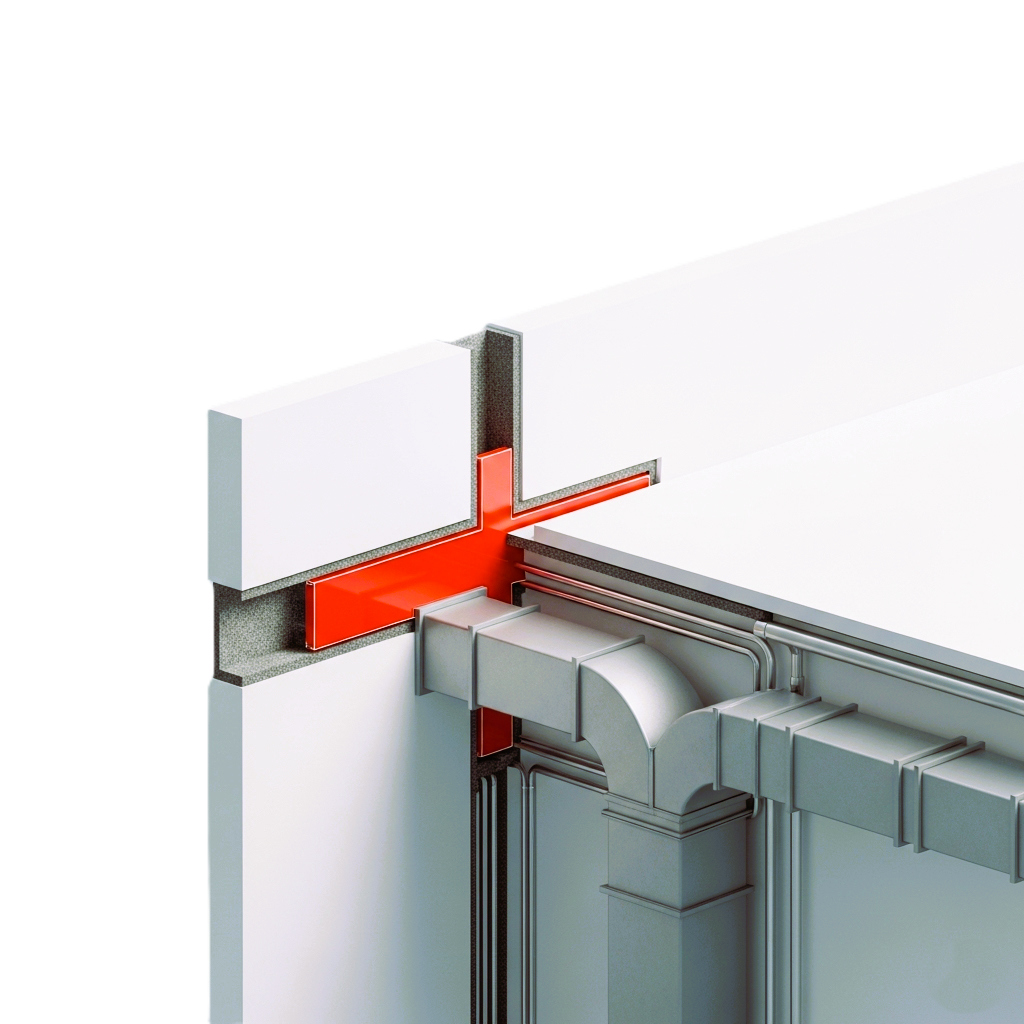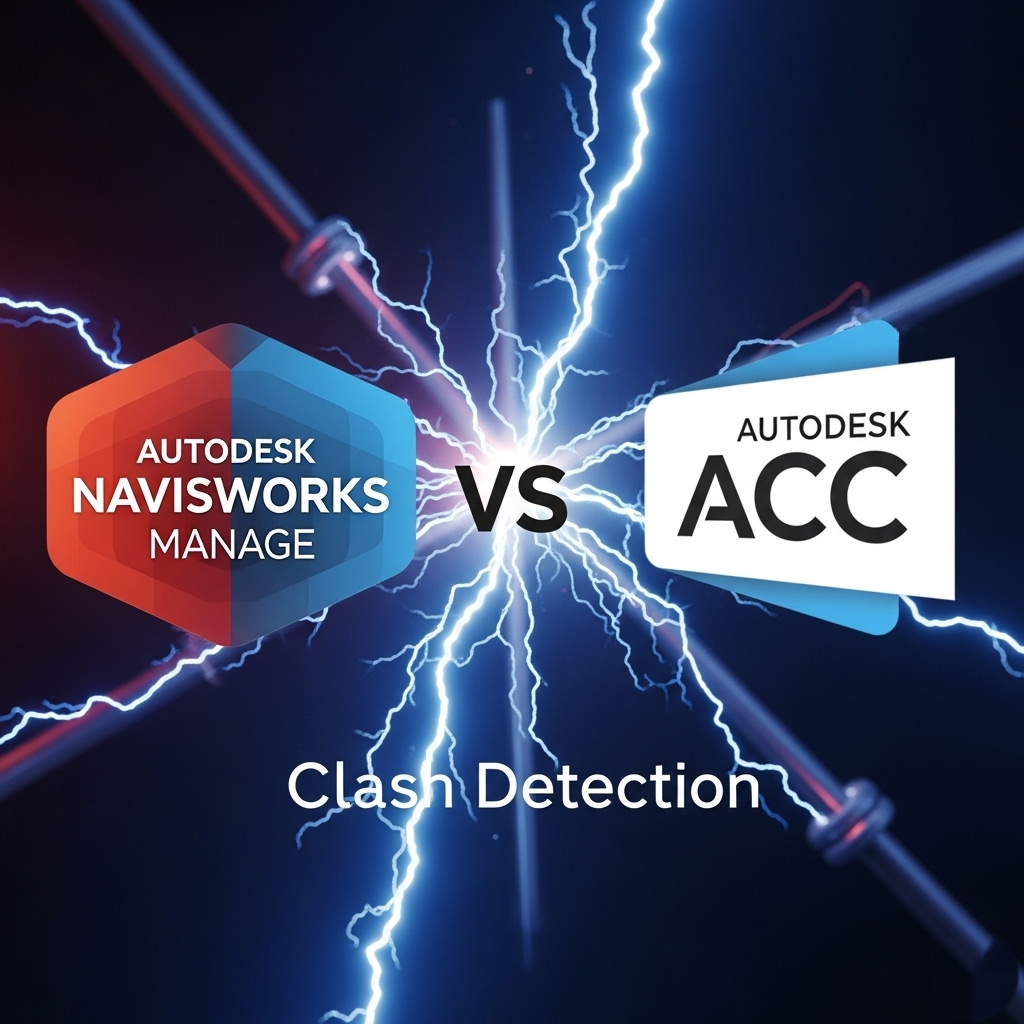Welcome back to the AECO Round Table! Today, we’re diving into a topic that often sparks lively debate: clash detection. Specifically, we’re pitting two powerhouses against each other – Autodesk Navisworks Manage and Autodesk Construction Cloud’s (ACC) built-in Clash Detection. When do you use which? What are the steps? Let’s hear from our esteemed panel.
Our Panelists:
- Ollie (Owner): Focused on project success, budget, and schedule.
- Connie (Construction Manager): The maestro of coordination and smooth execution.
- GC Greg (General Contractor): The boots-on-the-ground expert, managing trades.
- Civvy (Civil Engineer): Ensures the site is ready and infrastructure flows.
- Sparky (MEP Engineer): The wizard of pipes, wires, and HVAC.
- Struco (Structural Engineer): The backbone of the building’s integrity.
- Archie (Architect): The visionary, bringing design to life.

Connie: Alright team, let’s get straight to it. Clash detection is non-negotiable for efficient project delivery. We’ve got two main tools in our Autodesk arsenal. Ollie, from your perspective, what’s your primary concern here?
Ollie: Honestly, it boils down to mitigating risk and saving money. Every clash resolved virtually is a potential costly rework avoided in the field. I need to know we’re using the most effective tool for the job to keep things on track and within budget.
GC Greg: And for us, it’s about constructability. We need to identify issues early so our subcontractors aren’t staring at a wall where a duct needs to go. Time is money, and field reworks are a huge drain.
Archie: From a design perspective, it’s about validating our models and ensuring our intent can actually be built. Early clash detection helps us refine our designs before they’re set in stone.
Struco: Precisely. We need to confirm our structural elements don’t interfere with, say, a major pipe chase, or vice-versa.
Sparky: And from MEP, we’re often the ones squeezing systems into tight spaces. Clashes with structure or architectural elements are a daily occurrence, so efficient detection is key.
Civvy: Don’t forget the site! While our models might be less about internal clashes, we often need to check for conflicts with existing utilities or site features that impact building placement or infrastructure.

Autodesk Navisworks Manage: The Deep Dive Detector
Connie: Excellent points, everyone. Let’s start with Navisworks Manage. It’s been the industry standard for quite some time. Who wants to walk us through the typical steps and primary use cases?
Sparky: I’ll jump in. Navisworks Manage is our go-to for really granular, complex clash detection.
Steps for Navisworks Manage Clash Detection:
- Model Aggregation: Each discipline (Arch, Struc, MEP, Civil, etc.) publishes their latest models (e.g., RVT, DWG) and we consolidate them into a single NWC or NWD file. This is crucial for a complete picture.
- Clash Set Creation: Define specific clash tests. For example, “MEP Duct vs. Structural Beams,” “Pipe vs. Ceiling Space,” or “Architectural Wall vs. Electrical Conduit.” You can group elements to test specific interactions.
- Tolerance Setting: Define the acceptable overlap or clearance. A small penetration for a bolt might be acceptable, but a pipe going straight through a beam is not.
- Running the Test: Execute the clash test. Navisworks then highlights all the identified conflicts.
- Review and Grouping: This is where the manual work comes in. We review each clash, determine if it’s a “hard clash” (physical interference) or a “clearance clash” (violation of a required buffer zone). We then group similar clashes to streamline resolution.
- Reporting and Assignment: Generate detailed reports, often exported as HTML or Excel, showing clash location, involved elements, and screenshots. These are then assigned to the responsible party for resolution.
- Coordination Meetings: These reports form the basis of our BIM coordination meetings. We review clashes as a team, discuss solutions, and assign actions.
- Model Updates and Re-testing: Disciplines update their models based on resolutions. We then re-run the clash tests to confirm issues are resolved and no new clashes have been introduced. This is an iterative process.
Use Cases for Navisworks Manage:
- Complex Inter-Disciplinary Clash Resolution: When you need detailed analysis across many disciplines simultaneously.
- Advanced Clearance Checks: Defining specific clearance zones around equipment or circulation paths.
- Custom Clash Rules: Setting up very specific tests based on project requirements or specific element types.
- Visualizing and Isolating Clashes: Its powerful navigation and visualization tools make it easy to drill down into specific conflict areas.
- BIM Coordination Meetings: As Sparky mentioned, it’s the standard for presenting and discussing clashes during coordination sessions.
- Reporting and Tracking: Robust reporting features for tracking clash resolution progress over time.
- Federated Model Review: Beyond clashes, it’s fantastic for general model review and constructability analysis.
Autodesk ACC Clash Detection: The Collaborative Cloud Solution
Connie: Thanks, Sparky! That’s a great overview of Navisworks Manage. Now, let’s pivot to ACC Clash Detection. GC Greg, how has this changed your team’s workflow?
GC Greg: It’s a game-changer for collaborative, cloud-based workflows. It democratizes clash detection to some extent and gets everyone looking at the same information in real-time.
Steps for ACC Clash Detection (using Autodesk Docs/Model Coordination):
- Model Upload to ACC: All project models (Revit, IFC, DWG, etc.) are uploaded directly to a shared folder in Autodesk Docs.
- Automated Clash Detection (Model Coordination): Once models are in Docs, ACC’s Model Coordination service automatically aggregates them and performs clash detection in the background. You don’t “run” a test like in Navisworks; it’s constantly analyzing.
- Viewing and Filtering Clashes: Users can access the “Model Coordination” module in ACC. Here, you can select which models to clash against each other and view the results. You can filter clashes by model, object type, or status.
- Clash Grouping and Assignment: Similar to Navisworks, you can group related clashes. Crucially, you can then create an “Issue” directly from a clash within ACC, assign it to a specific team member, add due dates, and include comments and attachments.
- Real-Time Collaboration: All stakeholders can access the clash data and issues from anywhere with an internet connection. Comments, updates, and resolutions are all tracked in real-time.
- Issue Tracking and Reporting: ACC provides dashboards and reports to track the status of all created issues, including clashes. This allows for clear accountability.
- Model Updates and Re-evaluation: As models are updated in Docs, the clash detection automatically re-evaluates, showing whether issues have been resolved or if new ones have emerged.
Use Cases for ACC Clash Detection:
- Early & Continuous Clash Detection: Because it’s automated and cloud-based, it allows for continuous, early clash detection throughout the design process, not just at specific coordination milestones.
- Decentralized Collaboration: Perfect for teams working remotely or across different offices, as everyone accesses the same live data.
- Design-Phase Coordination: Great for designers to proactively identify and resolve clashes within their models before they even go to coordination meetings.
- Trade Coordination (Basic): For simpler clashes between trades, especially when integrating specific components.
- Project Stakeholder Visibility: Owners and other non-BIM experts can easily view project issues and their resolution status without needing specialized software.
- Issue Management Integration: Seamless integration with ACC’s Issues module means clashes are directly linked to actionable tasks.
- Accessibility and Ease of Use: Generally more user-friendly for those less familiar with advanced BIM software.

The Verdict: It’s Not Either/Or, It’s Both!
Ollie: So, it sounds like neither is a silver bullet, but rather tools with different strengths.
Connie: Exactly, Ollie. It’s rarely an either/or situation.
GC Greg: We often use ACC for that continuous, early screening. It’s like our first line of defense. As models develop, it catches a lot of the low-hanging fruit.
Archie: For us, ACC is fantastic for internal model review and early coordination with Struco and Sparky’s teams before we even get to the full Navisworks federation.
Struco: Yep, ACC helps us catch basic structural conflicts with other disciplines really quickly.
Sparky: But when we get to the more complex, detailed coordination, especially for those tight MEP spaces and routing, Navisworks Manage is still indispensable. We use it for the detailed review sessions and to generate those comprehensive coordination reports.
Civvy: And for large-scale infrastructure projects, Navisworks often provides a better environment for aggregating massive datasets, including GIS, point clouds, and civil models, for comprehensive site-wide clash analysis that ACC might struggle with at that scale.
Connie: So, the consensus seems to be:
- ACC Clash Detection: Ideal for continuous, early-stage, cloud-based, and collaborative clash identification and issue management, especially in the design phase and for basic trade coordination. It empowers more team members to engage in clash resolution.
- Navisworks Manage: Remains the champion for detailed, complex, federated model clash analysis, advanced clearance checks, in-depth reporting, and formal BIM coordination meetings where precise visualization and grouping are paramount.
Ollie: That makes perfect sense. It’s about using the right tool for the right stage and complexity of the problem. Thanks, team, this was incredibly insightful!
What do you think, team? Contact us to discuss what options you might have integrating these software into your workflows.


Leave A Comment